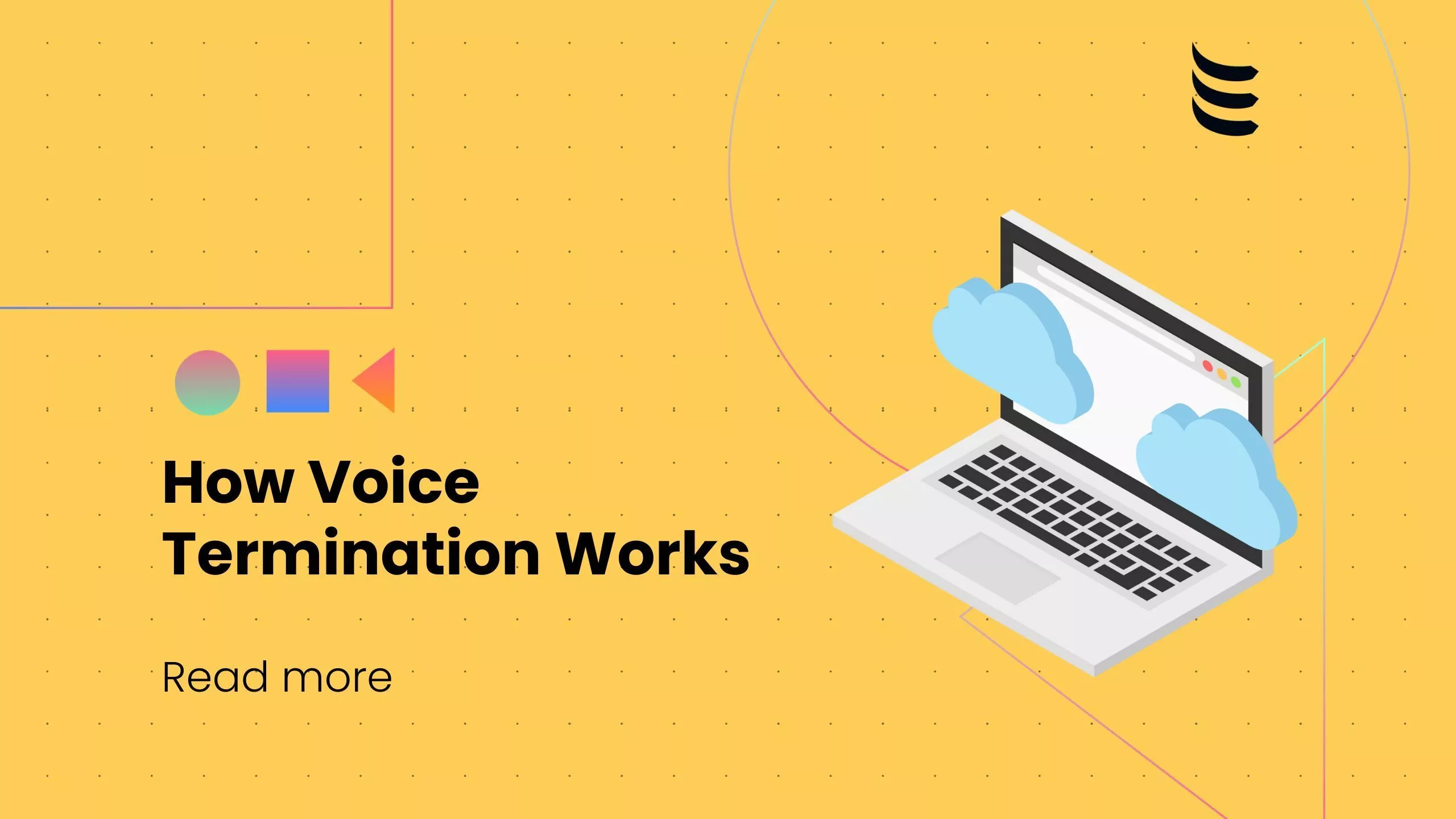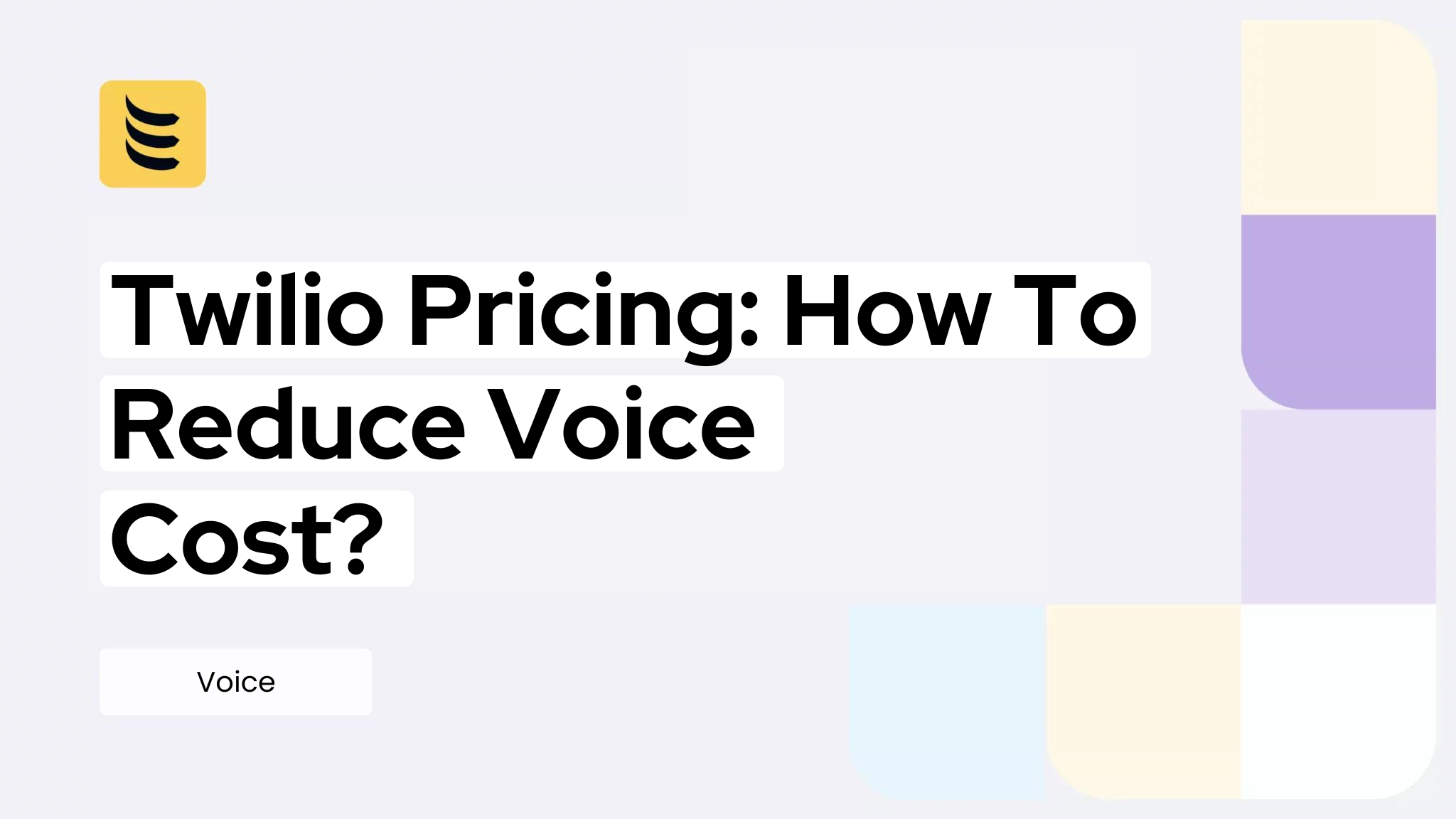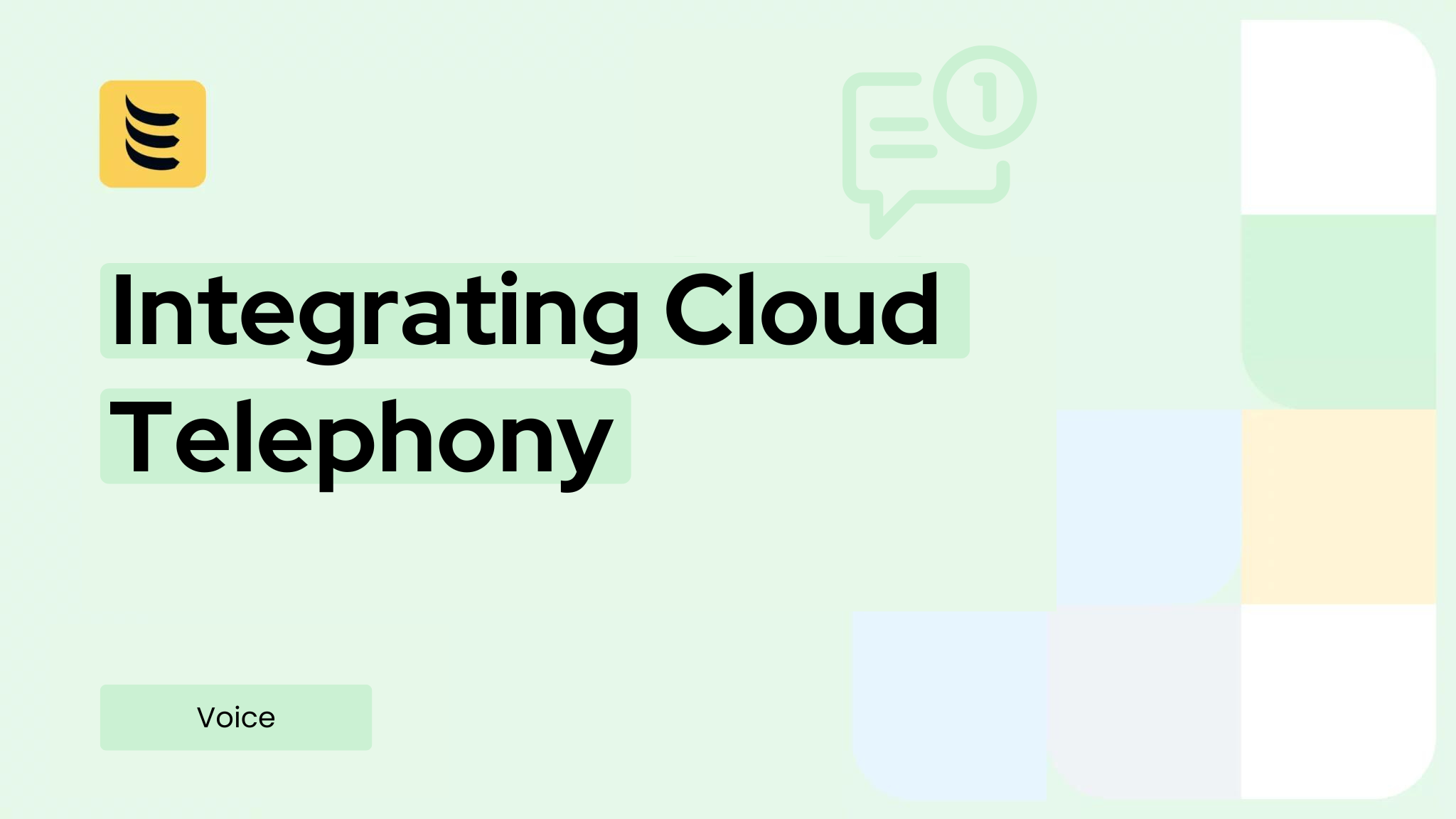With VoIP changing the way in which we communicate and gaining in popularity for its flexibility and low cost, it’s increasingly important to understand the relevant terminology and what to look for in VoIP services and providers. Here’s a look at what voice termination is and what’s involved.
What is VoIP calling?
Voice Over Internet Protocol (VoIP) refers to calls and communication sent via digital means over the internet. In terms of VoIP voice calls, the calling party places the call to the called party. The data to be sent is divided into packets, with information assigned to identify them as they’re transmitted over the network. Upon reaching the destination, the packets are reassembled to form the original data to be communicated to the recipient.
What does voice termination refer to?
Voice termination is also referred to as call termination. When the call is placed, the call is routed from one mobile or VoIP provider to the next until it gets to its destination. Voice termination, therefore, relates to the end point at which the call is received. This may be to an Internet destination, such as Skype, or a PSTN (public switched telephone network) if the calling party contacts a landline number, or a mobile network carrier. Termination services will route these calls to the receiver, which could be anywhere in the world.
The voice termination provider will also be responsible for rearranging the data once it reaches its destination. This is a crucial element in ensuring that the call is completed adequately and that call quality does not significantly deteriorate. Thanks to developments in VoIP technology, call quality can now be of a far higher standard than it once was. In the majority of cases, it is now at least equal to that of a traditional call.
The process of making a VoIP call requires no additional hardware or infrastructure other than either mobile network data, such as 3G or 4G, or internet access, together with a compatible device. The calling party can, for example, use a VoIP compatible phone, tablet device or computer, without being restricted to a specific location, making communication both more budget-friendly and mobile.
Types of voice termination providers
There are different types of providers when it comes to managing VoIP Internet protocol (IP) networks. The original call and its termination can be handled by a provider from one of three Tiers.
A tier-one operator is registered and controls the infrastructure capable of handling the call and its termination. A tier-2 provider will need to lease the service of a tier-one, registered operator. A tier-3 operator is also unregistered and will lease the service from either tier-one or tier-two providers. This increases competition between providers and offers a greater degree of choice when it comes to companies and prices.
Finally, there are also specialist providers that resell or provide wholesale VoIP and termination services, such as IDT. These will represent a rather more flexible, financially attractive option for businesses placing a high volume of calls and requiring good quality worldwide voice termination.
Form succesfully sent ;)
Costs and implications of voice termination
While many VoIP services provide a cost-effective means of communication, often with free calls, some services and types of call will incur a charge. Almost any call breaking out into the PSTN will incur some level of charge, with calls to certain destinations such as Asia and the Middle East routinely being subject to a higher termination charge, given the fact that there are more incoming calls than there are outgoing in these areas.
A voice termination service provider needs to have the capacity to handle high traffic volumes in order to ensure that call quality is maintained. Telephony operators need to be adept in buying and selling termination, more so as the market is becoming increasingly populated and competitive.
Termination services can range from basic features to more advanced packages for larger firms with a greater demand. Typically, termination can be sold by the minute or wholesale. Wholesale packages, such as those from IDT, can often also offer additional services and benefits for businesses to provide greater efficiency and support.
The quality of the call can vary, so choosing the right termination service is an important consideration. A Mean Opinion Score (MOS) will provide a 1 to 5 rating of the voice quality. The codecs used for encoding and decoding the data play a significant role in the resulting call quality the receiver will experience. The protocol utilised, such as the popular SIP (Session Initiation Protocol), is also vital in ensuring the soft switches that essentially map the calls and the rest of the transfer process runs smoothly and coherently.
Making and receiving VoIP calls involves the efficient collaboration between networks and a strong, reliable internet connection is also required.
The Role of Carriers in Voice Termination
In voice termination, carriers play a central role in facilitating the routing of calls from one network to another. These carriers can be categorized into different tiers based on their infrastructure, reach, and capacity:
- Tier 1 Carriers: These are large telecom companies that own and operate their own extensive networks. They have direct access to the global telephone network and do not need to rely on intermediaries to complete calls. Tier 1 carriers provide wholesale voice termination services and are often considered the backbone of international communications.
- Tier 2 Carriers: Tier 2 carriers buy services from Tier 1 carriers to offer voice termination services to other providers. They typically have some network infrastructure of their own but rely on Tier 1 carriers to extend their reach for international call termination.
- Tier 3 Carriers: These carriers have limited network coverage and often serve smaller geographic areas or niche markets. They purchase termination services from Tier 1 or Tier 2 carriers and then sell them to local service providers or businesses.
Each carrier in this chain plays a critical role in ensuring that calls are properly routed and terminated across different networks, whether they’re local, national, or international. The choice of carrier often impacts call quality, pricing, and reliability.
The Technical Process Behind Voice Termination
The technical process of voice termination is both complex and seamless, thanks to modern telecommunications infrastructure. When a voice call is made, it follows a multi-step journey before reaching the recipient. Here’s a simplified breakdown of how it works:
- Signal Initiation: When a caller dials a number, their voice is converted into digital packets (for VoIP) or sent as analog signals (for traditional phone networks).
- Call Routing: The call is then routed through the originating carrier’s network. The call data is processed by switches, which are responsible for determining the best path for the call based on network availability, cost, and quality.
- Switching and Interconnection: Depending on the destination, the call may pass through one or multiple carriers. This is where interconnection agreements between carriers come into play, allowing the call to be handed off from one network to another. For VoIP systems, SIP (Session Initiation Protocol) is typically used to establish the connection.
- Termination to the End Carrier: The final step involves the destination carrier, which is responsible for delivering the call to the recipient’s device or phone number. If the call crosses borders, it may pass through several international carriers before it reaches the destination carrier for final termination.
Throughout this process, various protocols and technologies ensure that the call is routed efficiently, with minimal latency and optimal call quality.
VoIP vs. Traditional PSTN Termination
The rise of Voice over Internet Protocol (VoIP) has brought about significant changes in the way voice termination works, especially when compared to the traditional Public Switched Telephone Network (PSTN).
- VoIP Termination: In VoIP, voice signals are converted into data packets and sent over the internet. This allows for greater flexibility and cost savings, as calls are no longer restricted to physical phone lines. VoIP termination services are particularly beneficial for businesses with high call volumes or those making international calls, as they significantly reduce per-minute rates.
Advantages of VoIP Termination:- Lower costs for both local and international calls.
- Scalability, making it easier to handle fluctuating call volumes.
- Integration with other communication platforms like email or chat.
- PSTN Termination: PSTN is the traditional method of routing calls through a network of copper wires and telephone switches. While it remains a reliable option, especially for landline communication, it is often more expensive and less flexible than VoIP. PSTN termination is still widely used for certain call types, particularly in regions where internet infrastructure may not be fully developed.
Advantages of PSTN Termination:- Consistent, high-quality voice transmission with fewer packet loss issues.
- Better reliability in areas with limited or unstable internet connectivity.
In the modern telecommunications landscape, many businesses are moving towards hybrid solutions that combine the reliability of PSTN with the cost efficiency and flexibility of VoIP. This allows them to enjoy the best of both worlds—high-quality voice communication with the potential for reduced costs.
What Can we expect in 2024 and beyond?
1. Global VoIP Market Growth
- The global VoIP market is expected to reach $102.5 billion by 2024, with a compound annual growth rate (CAGR) of 9.6% from 2020 to 2024. This rise is largely driven by businesses adopting VoIP to reduce costs and streamline call routing.
2. AI-Powered Call Routing
- AI-driven call routing and automated solutions are seeing a rise, with 40% of contact centers expected to implement AI for call routing by 2024. This is part of a broader trend of using AI for intelligent call distribution based on customer history, sentiment, and predicted outcomes.
3. Cloud-Based Communication Growth
- By 2024, more than 70% of enterprises will have adopted cloud-based communication platforms, which enable more efficient and flexible call routing. This trend is linked to the need for scalable solutions that can handle large call volumes and remote work setups.
4. Quality of Service (QoS) Metrics
- The average acceptable latency for VoIP calls is expected to remain below 150 milliseconds. However, premium call routing solutions aim to achieve sub-100 millisecond latency to maintain high voice quality, especially for international calls.
- Packet loss tolerance for voice calls is projected to stay below 1% in 2024, as call routing technologies aim to improve call quality across IP networks.
5. SIP Trunking Adoption
- SIP trunking continues to be the preferred method for businesses transitioning from legacy systems, with 83% of businesses using SIP trunking for call routing by 2024. This method allows for seamless VoIP connectivity and more cost-effective call routing.
6. Global Mobile and Fixed-line Traffic
- Global mobile voice traffic is expected to reach 1.5 trillion minutes in 2024, with a portion of this traffic routed through advanced VoIP networks.
- Global fixed-line voice traffic will decline, but it’s still estimated to generate over 400 billion minutes in 2024, with an increasing share being handled by VoIP solutions.
7. Hybrid Call Routing Solutions
- By 2024, approximately 65% of enterprises will implement hybrid routing systems, combining VoIP, PSTN, and cellular networks to ensure the best routing path based on cost, quality, and availability. This flexibility is crucial for businesses with international call centers or distributed workforces.
8. Cost Reduction Through VoIP
- Businesses adopting VoIP call routing are projected to reduce their communication costs by 30-50% in 2024, as VoIP continues to offer cheaper long-distance and international rates compared to traditional PSTN.
These statistics illustrate how technological advancements and the rise of VoIP, cloud-based systems, and AI are shaping call routing in 2024, making it more efficient, cost-effective, and adaptable for global businesses.





One Response
good information